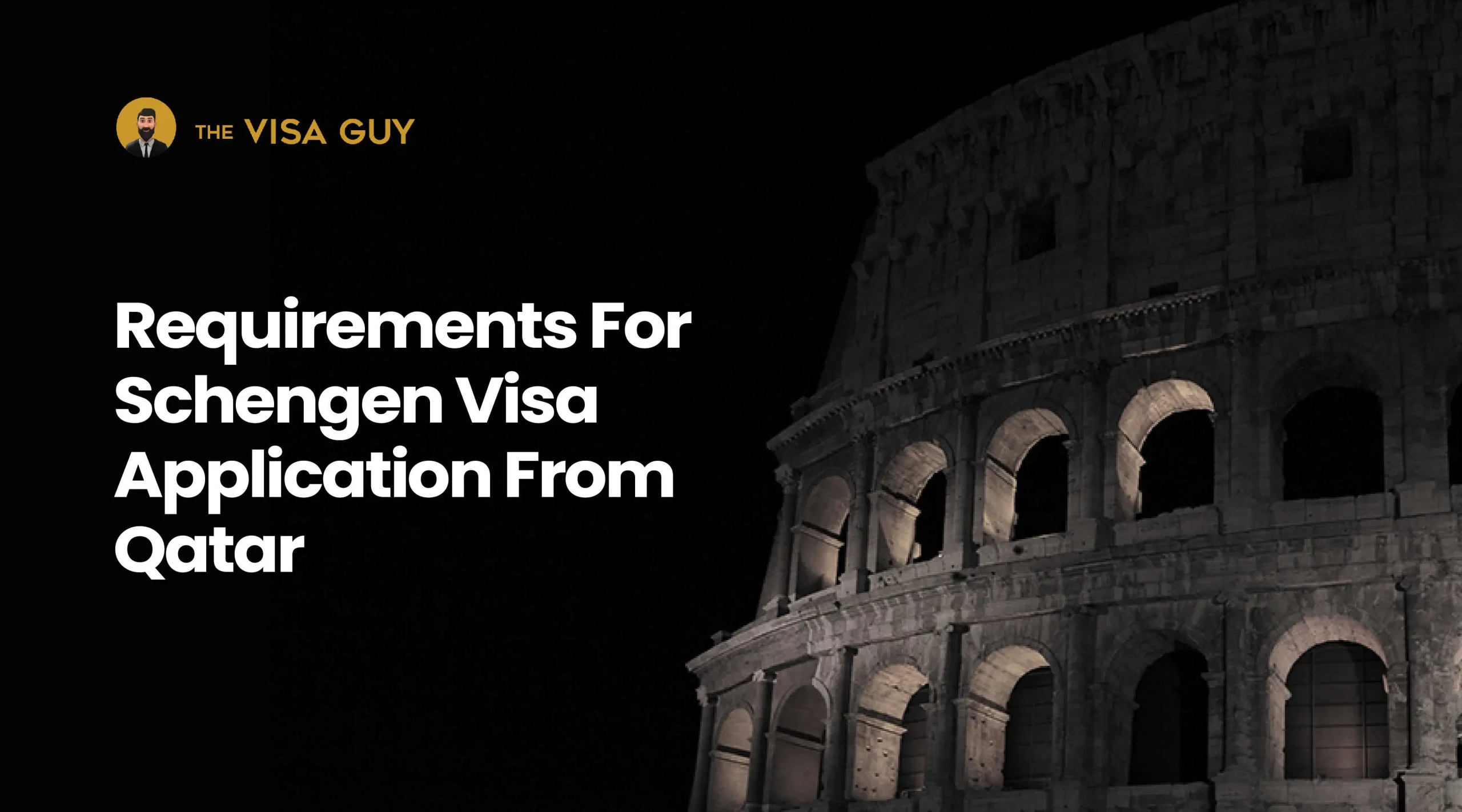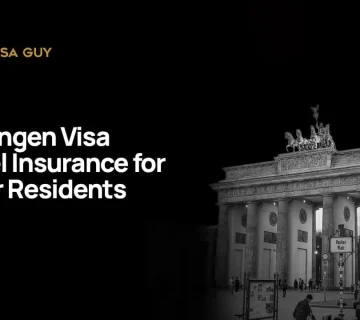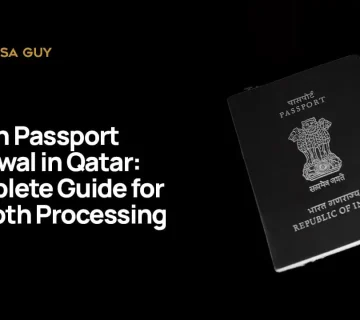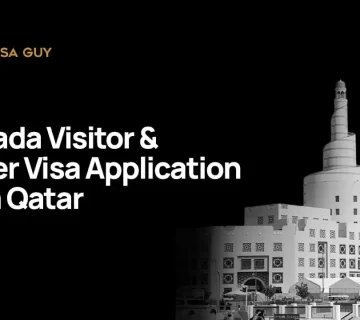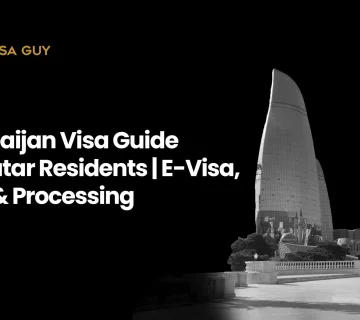The purpose of a Schengen Visa is to allow people from outside the European Union to visit the countries of the Schengen Area. It’s like a special passport that lets you travel to many countries with just one visa.
You can use a Schengen visa for tourism, business, medical treatment, studies, or participating in cultural or sports activities.
However, travelers from Qatar to the Schengen area often have a waterfall of queries. As a trusted visa expert in Qatar, we decided to peel back the layers of Schengen visa application from Qatar requirements for travelers.
This complete guide to Schengen visa requirements is designed to answer queries such as:
- A list of supporting documents needed for a Schengen visa
- The samples of supporting documents
- How to determine if a Schengen visa is approved or rejected
- Tips and tricks from visa experts to make your Schengen application stand out
Yes, It covers everything related to Schengen visa requirements for travelers from Qatar.
Before diving into the detailed explanation, let’s first check out the essential documents and criteria!
Eligibility Criteria for Residents in Qatar:
- Valid Resident Permit: You must have a valid Qatar ID (QID).
- Sufficient Funds: You should be able to prove that you have enough money to cover your expenses during your trip.
Documents Required for Schengen Visa Application from Qatar
- Passport: Your passport must be valid for at least 3 months after your planned departure from the Schengen Area.
- Visa Application Form: You need to fill out the Schengen visa application form honestly and completely.
- Two Passport-Sized Photos: Recent photos with a white background.
- Travel Insurance: You must have travel insurance that covers medical expenses, repatriation, and other emergencies.
- Proof of Accommodation: A hotel booking confirmation or invitation letter from a host in the Schengen country.
- Round-Trip Flight Itinerary: A confirmed flight booking for your entire trip.
- Proof of Financial Means: Bank statements, salary slips, or other documents to show that you have enough money for your trip.
- Cover letter: A letter to the embassy or consulate explaining why you want to visit the Schengen area.
- NOC: A letter from your employer or institution (like school or university) that says they know you’re going on a trip and they don’t mind.
We have discussed the various types of supporting documents you need to submit. Here, we provide a crystal-clear picture of these essential documents.
1. Cover Letter for Schengen Visa Application
A cover letter for a Schengen visa is your chance to speak directly to the decision-makers. Share your plans – where you’re going, why, and what you’ll do there. Whether it’s exploring Paris, attending a Berlin conference, or studying in Rome, this is your story to tell.
Remember, a strong cover letter can make your application stand out. It’s more than forms; it shows you’re prepared and thoughtful, like assuring them you’ll be a respectful guest.
Schengen visas have different types based on how often you need to enter the Schengen countries.
Cover Letter for Double-Entry Visa
A double-entry visa allows you to enter the Schengen Area twice within a specific period. This is often granted to business travelers or those with family or business ties in the Schengen Area.
- Clearly state your purpose for both entries, such as business meetings or visiting family.
- Provide a detailed itinerary for both trips, including dates, destinations, and accommodation.
- Highlight your strong ties to your home country and your intention to return after both trips.
Cover Letter for Multiple-Entry Visa
A multiple-entry visa allows you to enter the Schengen Area multiple times within a specific period. This is typically granted to frequent travelers, business professionals, or those with strong ties to the Schengen Area.
- Clearly state the purpose of your frequent visits, such as business meetings, family visits, or studies.
- Provide a general itinerary for your planned trips, highlighting the frequency and duration of your visits.
- Emphasize your strong ties to your home country and your intention to return after each trip.
- Highlight any previous travel history to the Schengen Area, if applicable.
Tips to make your Schengen visa cover letter stand out.
- Get straight to the point and avoid unnecessary details.
- Provide truthful information and avoid exaggerations.
- Explain clearly why you want to visit the Schengen countries.
- Show your travel plans, including your accommodation and activities.
- Include information about your income and how you plan to fund your trip.
- Check for any errors in grammar or spelling.
- Write in a formal and polite manner.
- Make sure your letter is accompanied by all the necessary documents.
2. NOC Letter from Company for Schengen Visa
A Schengen Visa “No Objection Certificate (NOC)” is a letter from your employer stating that they have no issues with you taking time off to travel to the Schengen Area.
The purpose of the NOC is to confirm that your employer supports your travel and allows you to be away for the days mentioned in your Schengen Visa application.
While some embassies/consulates require this document, others consider it optional. Even if it’s not mandatory, submitting an NOC can still improve your chances of visa approval and speed up the application process.
Here are the key details to include in your No Objection Letter:
- The date the letter was written
- The company/school name and address
- Address of the visa application organization
- The name of the person applying for the Schengen visa
- The name and position of the person writing the letter
- The contact details of the person writing the letter
- A paragraph confirming that the company/school has no objections and that the person will return to resume their employment or studies.
3. Schengen Visa Application Form
A Schengen visa application form asks for information about you and your travel plans. This includes your name, passport details, the purpose of your trip, where you’ll be staying, and how much money you have. You’ll also need to provide information about your health insurance and sign the form.
How to Know if Your Schengen Visa is Approved or Rejected
It is heartbreaking to know that your visa has been rejected. Your email will inform you of the decision, or you can contact the embassy where you applied to find out whether your visa application is approved or rejected.
If you receive your passport back with the visa sticker, it means that your application has been approved.
A rejection letter will provide specific reasons for the visa denial. Here are the steps you can consider
What to Do If Your Visa is Refused
If your Visa is not approved, you should carefully review the rejection letter to understand the reason for the denial.
- If the reason for rejection is minor, you can reapply after addressing the issue.
- If you believe the decision is unfair, you can appeal the decision. However, the appeal process can be complex and time-consuming.
Navigating the Schengen visa application process can be daunting, but with the right guidance, it can be a smooth experience. The Visa Guy is here to help you every step of the way. From application form filling to document preparation, we are committed to making your visa journey hassle-free. Our visa experts have years of experience simplifying Schengen visa requirements and ensuring a smoother approval process. Get personalized assistance with your Schengen visa from Qatar and enjoy your trip!
FAQ
What is a Schengen Visa?
A Schengen Visa is a short-stay visa that allows you to travel to any of the 26 countries in the Schengen Area. Once you have a Schengen Visa, you can freely travel between these countries without border checks.
Read our blog to learn more about the Schengen Visa.
What are the Schengen Countries?
Here are the 26 Schengen countries:
Austria, Belgium, the Czech Republic, Denmark, Estonia, Finland, France, Germany, Greece, Hungary, Iceland, Italy, Latvia, Liechtenstein, Lithuania, Luxembourg, Malta, the Netherlands, Norway, Poland, Portugal, Slovakia, Slovenia, Spain, Sweden, and Switzerland.
Do I Need a Schengen Visa for Airport Transit?
It depends on your nationality and the specific airport. Some airports in the Schengen Area have designated transit areas where you can wait for your connecting flight without needing a visa. However, in most cases, if you’re leaving the transit area to enter the Schengen Area, even briefly, you’ll need a valid Schengen visa.
Do I Need a Schengen Visa for Greece?
Yes, you need a Schengen Visa to visit Greece. Greece is a member of the Schengen Area, and all non-Schengen citizens need a visa to enter.
Which Countries Can I Transit Without a Visa?
Many countries allow transit without a visa for specific nationalities. However, transit visa policies can change frequently. It’s best to check with the specific embassy or consulate of the country you’re transiting through to get the most accurate information.
What is a Schengen Visa Sticker?
A Schengen visa sticker is a small label affixed to your passport by the issuing authority. It contains essential information about your visa, including your name, passport number, visa validity, and most importantly, your visa number.
The visa sticker number is usually located on the top right corner of the visa sticker. It’s a series of numbers that uniquely identifies your visa.

